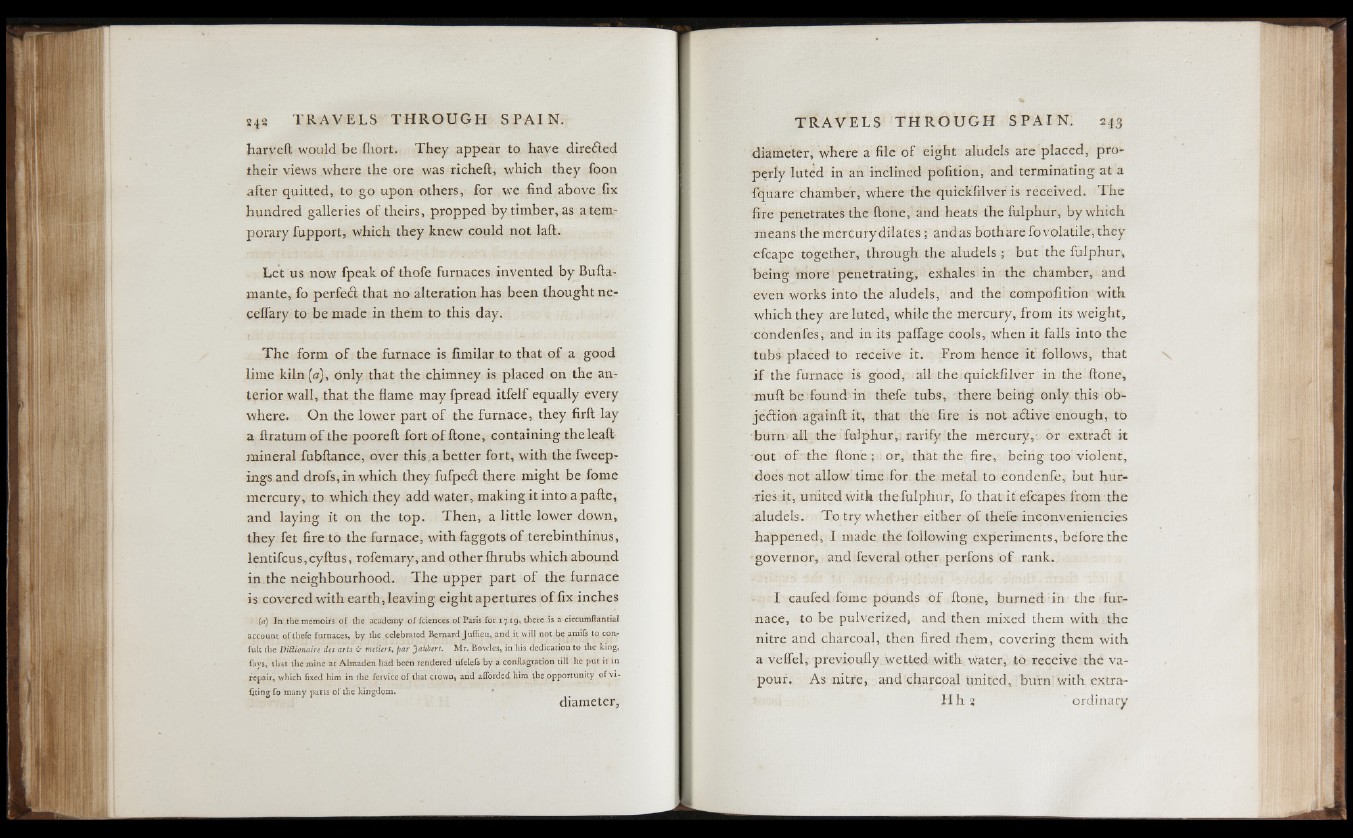
harveft would be iliort. They appear to have direfled
their views where the ore was richeil, which they foon
after quitted, to go upon others, for we find above fix
hundred galleries of theirs, propped by timber, as a temporary
fupport, which they knew could not laft.
Let us now fpeak of thofe furnaces invented by Buila-
mante, fo perfefl that no alteration has been thought ne-
ceifary to be made in them to this day.
The form of the furnace is fimilar to that of a good
lime kiln («}, only that the chimney is placed on the anterior
wall, that the flame may fpread itfelf equally every
where. On the lower part of the furnace, they firit lay
a ilratumof the pooreil fort o f ftone, containing the leaft
mineral fubftance, over this,a better fort, with the fweep-
ings and drofs,in which they fufpecl there might be fome
mercury, to which they add water, making it into a pafte,
and laying it on the top. Then, a little lower down,
they fet fire to the furnace, with faggots of terebinthinus,
lentifcus,cyftus, rofemary, and other ihrubs which abound
in the neighbourhood. The upper part of the furnace
is covered with earth, leaving eight apertures of fix inches
. (a) In the memoirs o f the academy o f fciences of Paris for. 1 719, there is a circuraftantial
account of thefe furnaces, by the celebrated Bernard Juflieu, and it will not be amifs to con-
fult the DiBioriaire des arts Hr metiers, par jahbert. Mr. Bowles, in his dedication to the king,
fays, that the mine at Almaden had been rendered ufelefs by a conflagration till he put it in
repair, which fixed him in the fervice of that crown, and afforded him the opportunity of vi-
Cting fo many parts of the kingdom#
diameter,
diameter, where a file of eight aludels are placed, properly
luted in an inclined pofition, and terminating at a
fquare chamber, where the quickfilver is received. The
fire penetrates the ftone,’ and heats the fulphur, by which
means the mercury dilates; andas botharefo volatile, they
efcape together, through the aludels ; but the fulphur,
being more penetrating, exhales in the chamber, and
even works into the aludels, and the compofition with
which they are luted, while the mercury, from its weight,
condenfes, and in its paifage cools, when it falls into the
tubs placed to receive it. From hence it follows, that
i f the furnace is good, all the quickfilver in the ftone,
mull bedound in thefe tubs, there being only this objection
againft it, that the fire is not active enough, to
burn all the fulphur,. rarify the mercury,-, or extrafl it
out o f - the ftone; or, that the fire, being too violent,
does not allow time for the metal to condenfe, but hurries
it, united with thefulphur, fo that it efeapes from the
aludels. To try whether either of thefe inconveniencies
happened, I made the following experiments, before the
•governor, and feveral other perfons of rank.
I caufed fome pounds of ftone, burned in the furnace,
to be pulverized, and then mixed them with the
nitre and charcoal, then fired them, covering them with
a velfel, previouily wetted with.water, to receive the vapour.
As nitre, and charcoal united, burn’with extra-
H h 2 ' ordinary